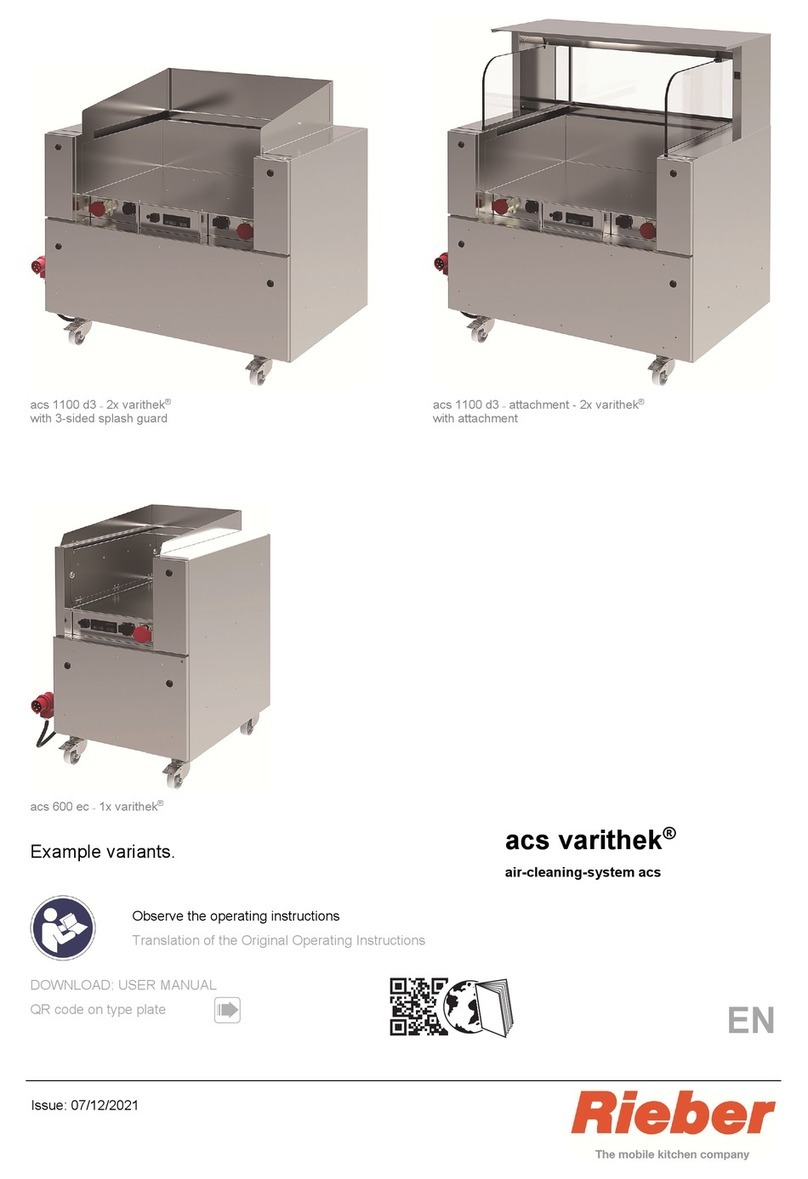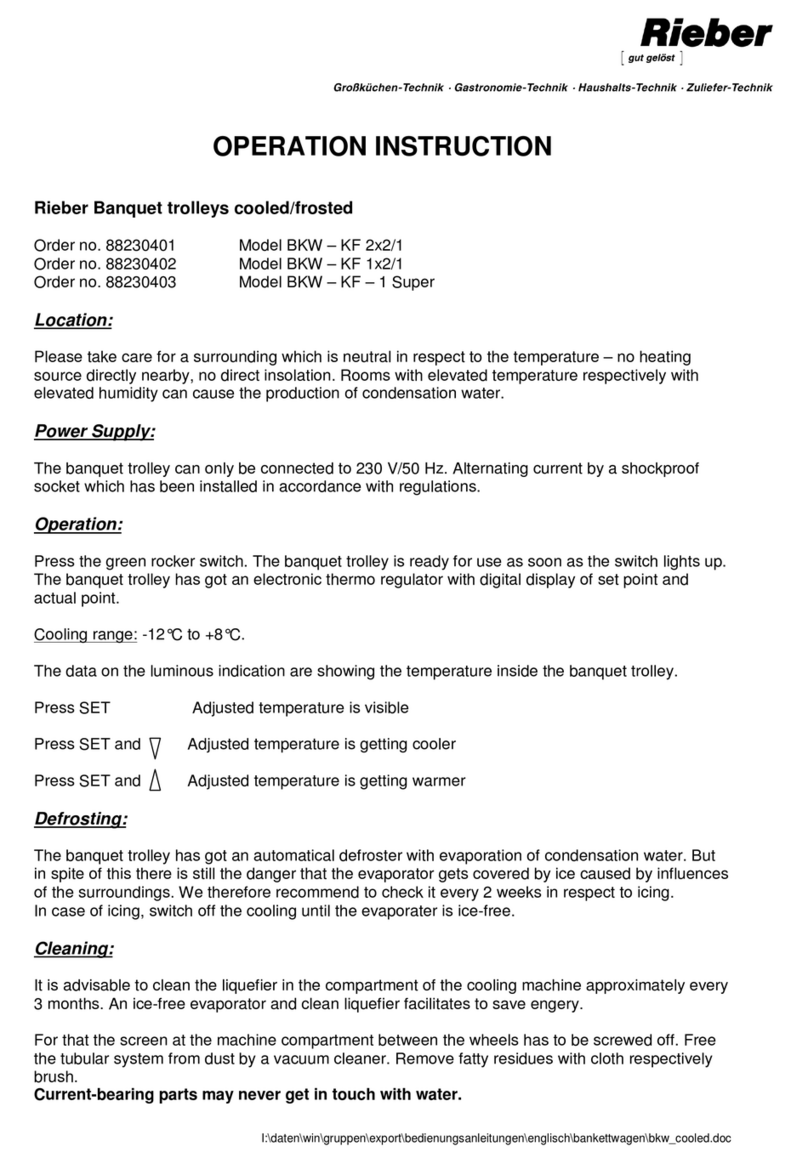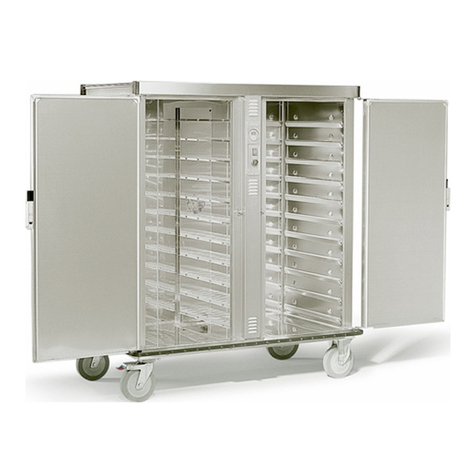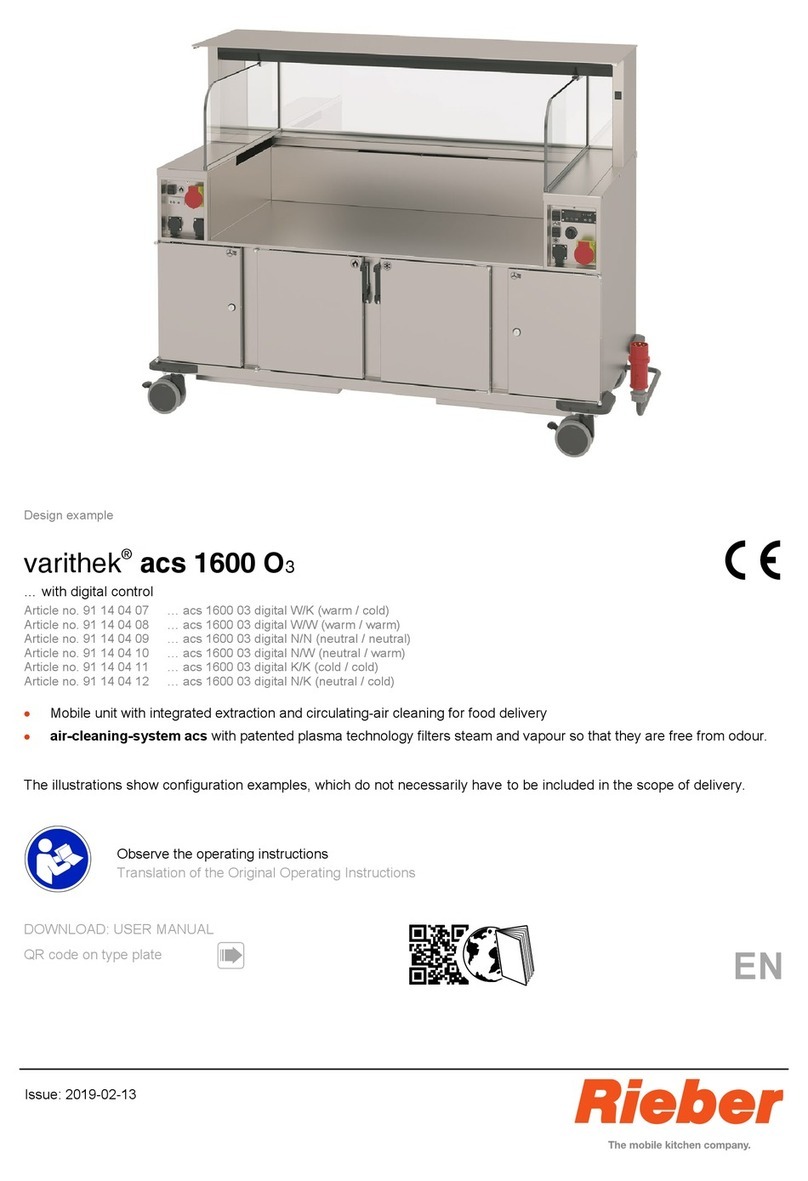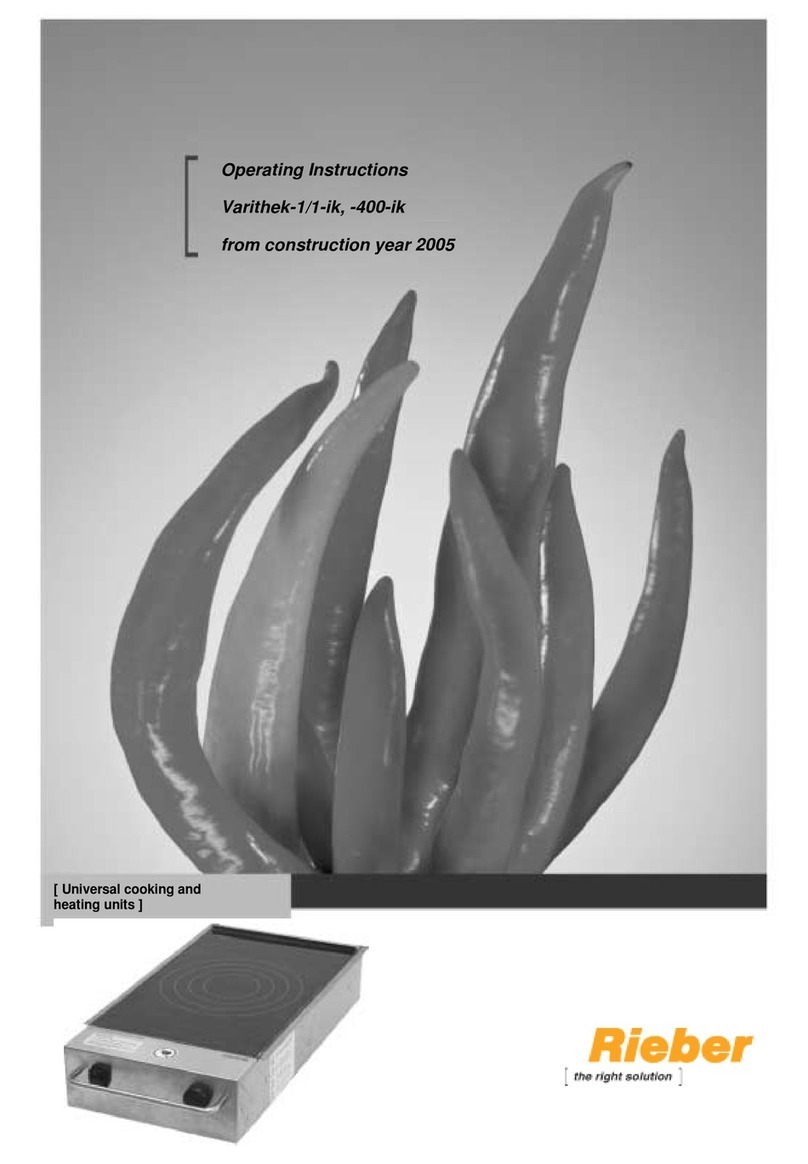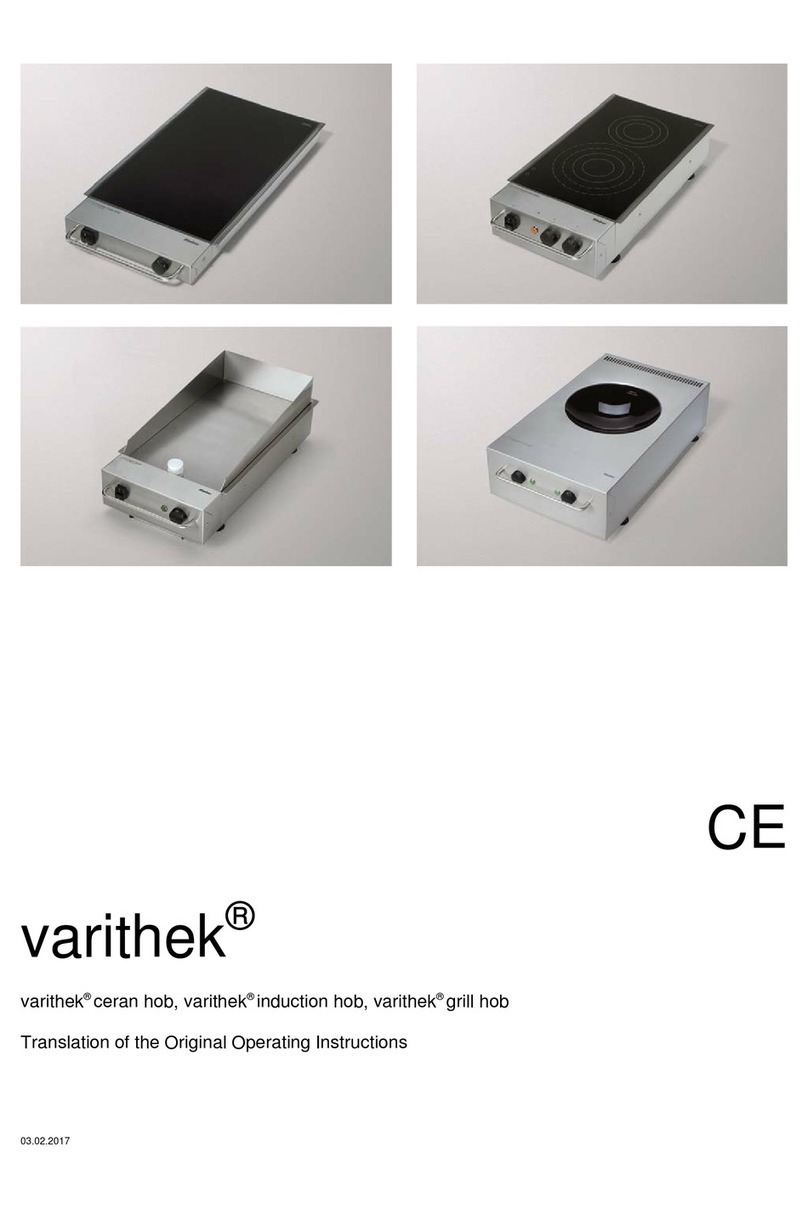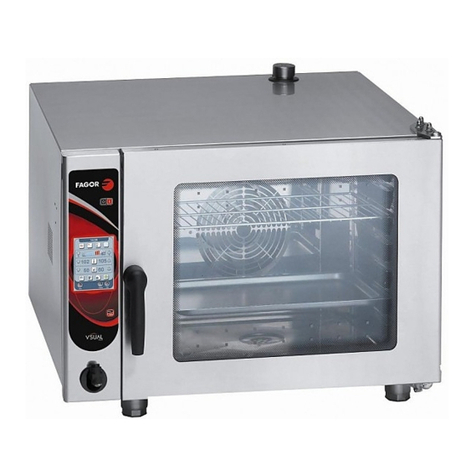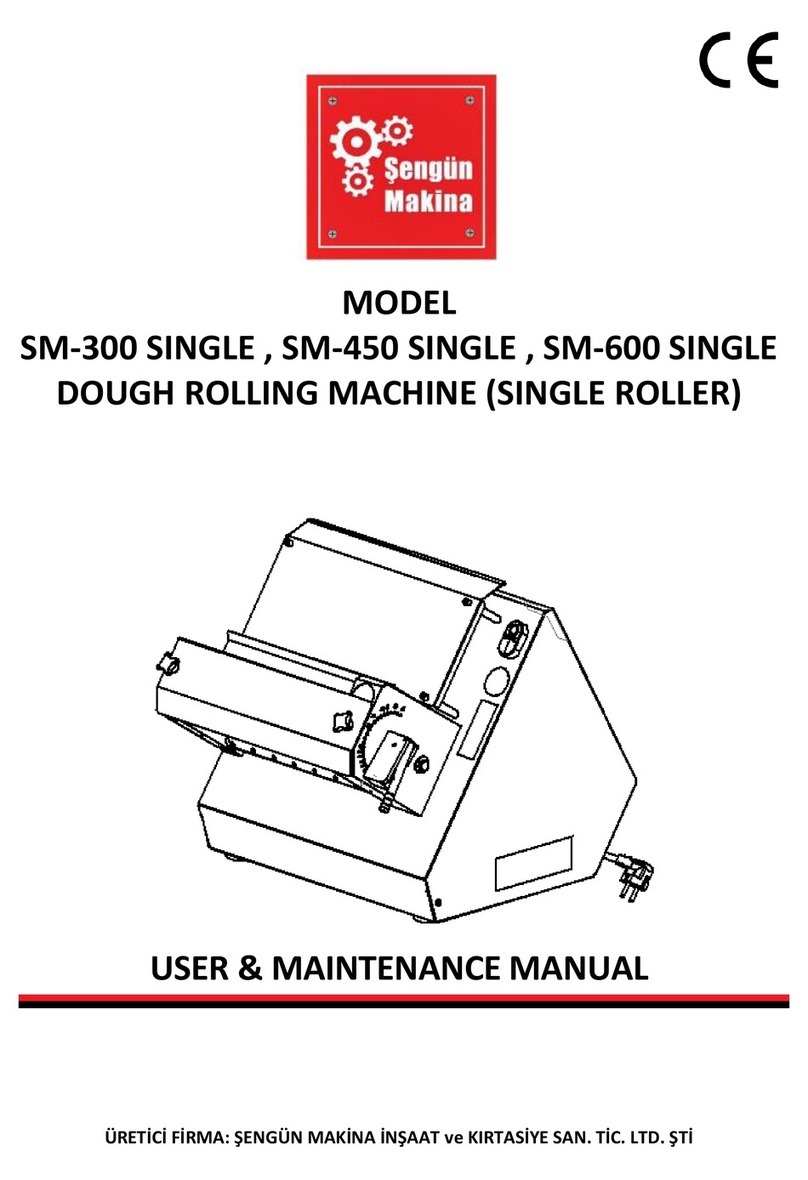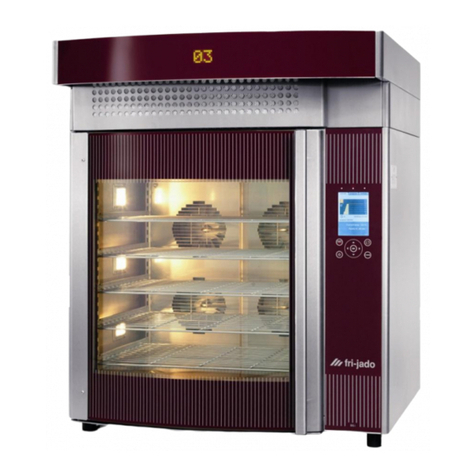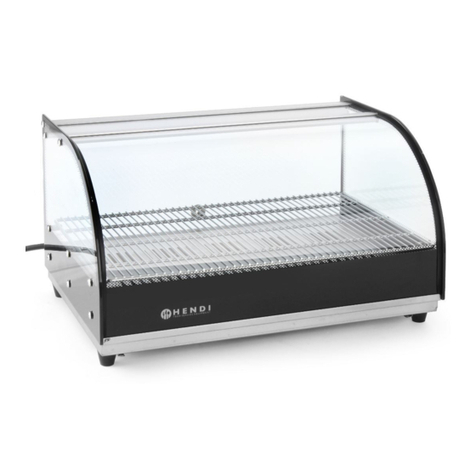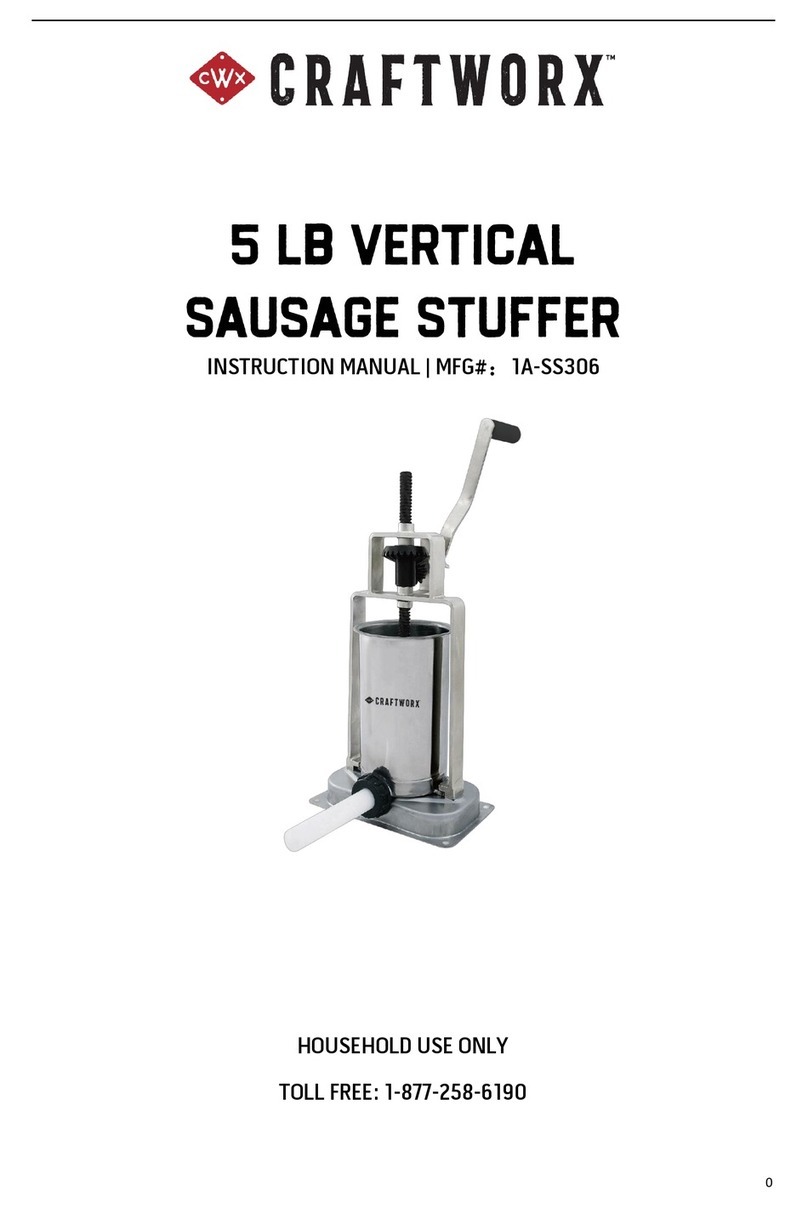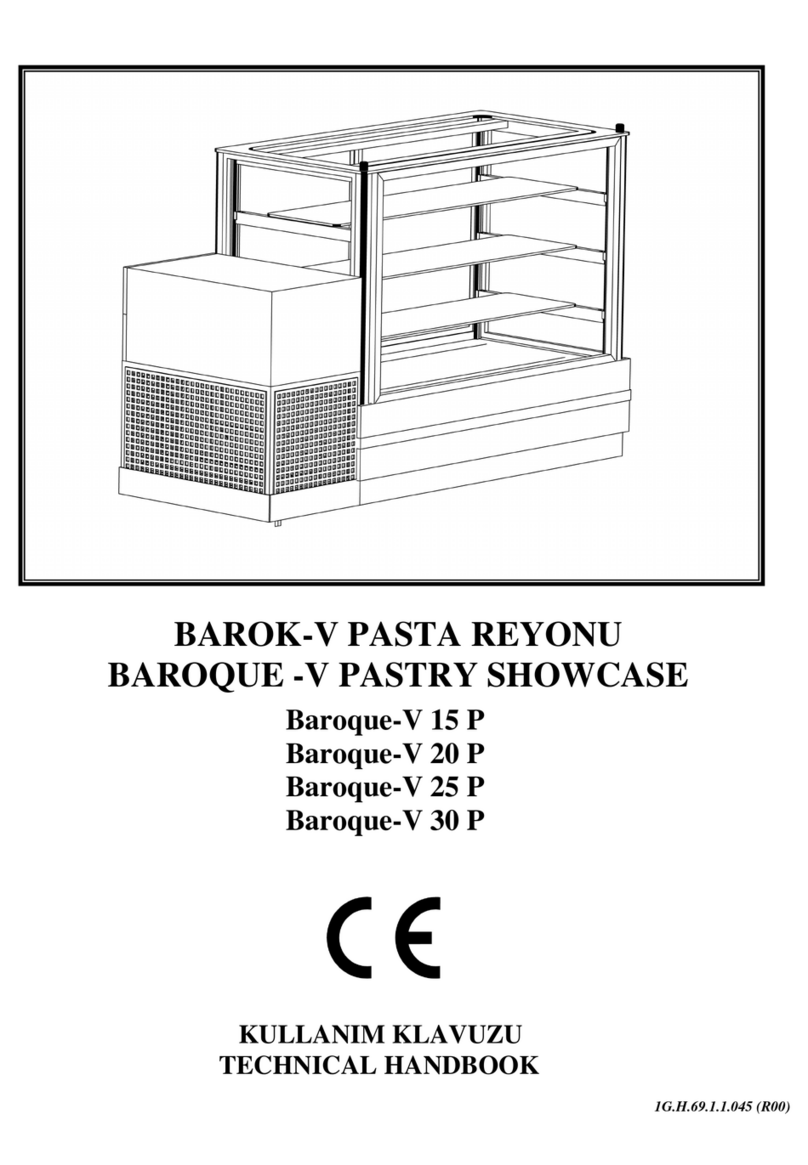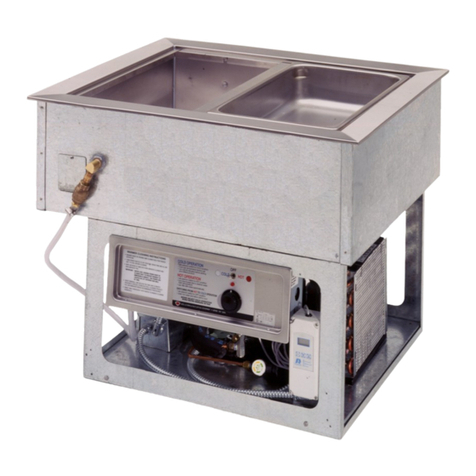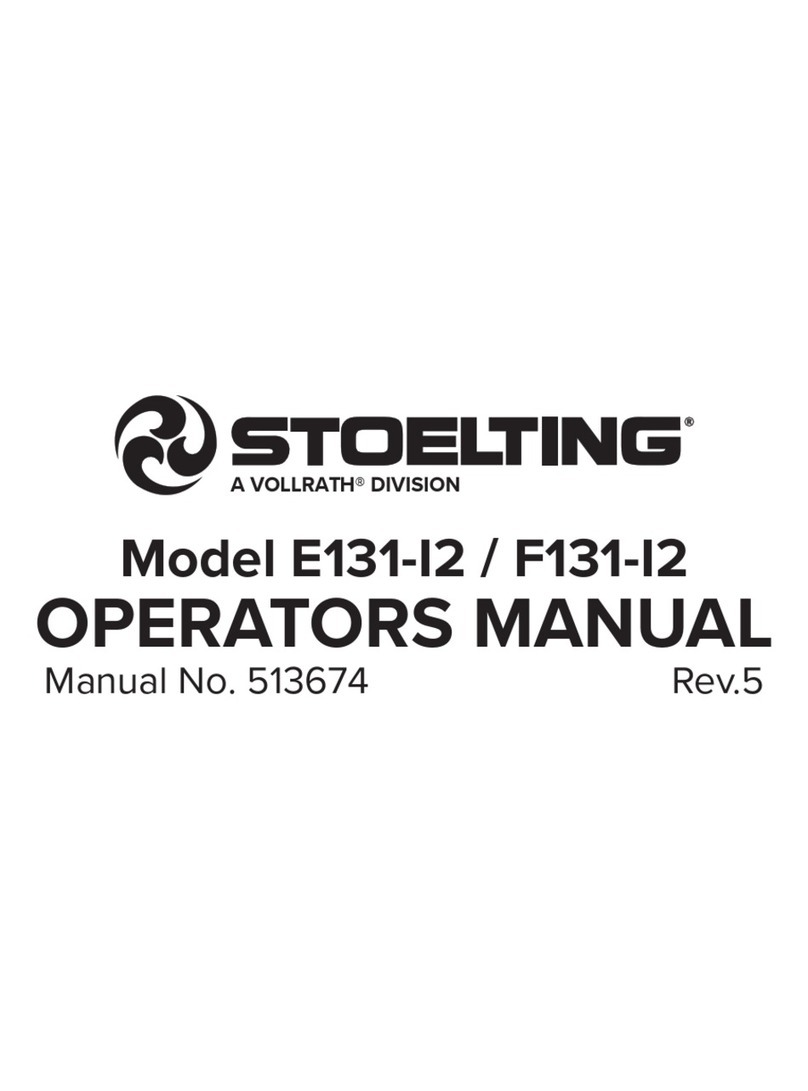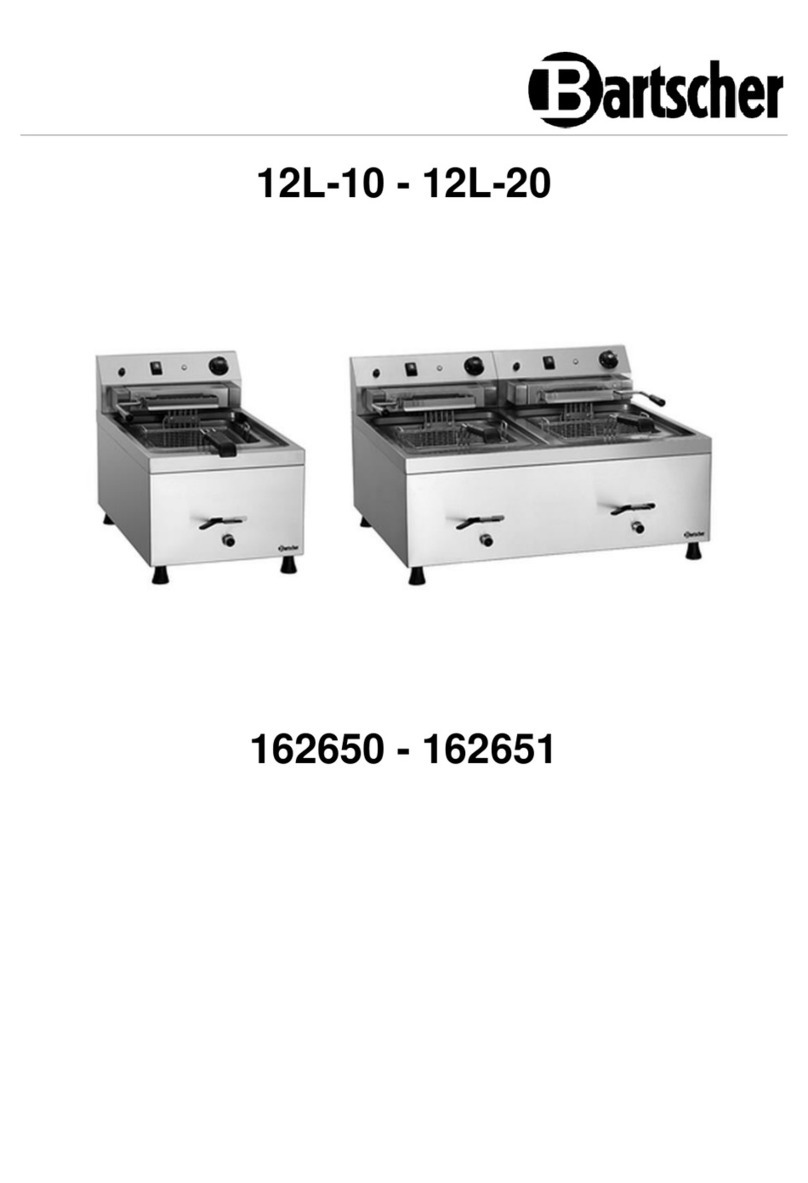Rieber Rolling Buffet Series Quick guide

Issue: 2018-08-01
Hot buffet
… with bain-marie
…with Ceran hot plates
…with built-in system carrier for varithek®systems
Cold buffet
…with refrigerated well
…with refrigerated cabinet
Drinks buffet
Neutral buffet
Niche buffet
Drive-in buffet
Cash till buffet
Corner buffet
Tray/cutlery buffet
Tops
Shelves
The illustrations show design and configuration examples, which do not necessarily have to be included in the scope of
delivery.
Observe the operating instructions
Translation of the Original Operating Instructions
Rolling Buffet
DOWNLOAD: USER MANUAL
QR code on type plate

Contents
2
Rieber GmbH & Co. KG
Contents
1Revision Index ................................................................................................................................................. 3
2Important information ..................................................................................................................................... 3
2.1 The components of the technical documentation ................................................................................................. 3
2.2 Using this guide..................................................................................................................................................... 3
2.3 Representation conventions in the text................................................................................................................. 4
2.4 Structure of safety instructions.............................................................................................................................. 4
3General Safety Instructions............................................................................................................................ 5
3.1 General behaviour................................................................................................................................................. 5
3.2 On use of electrical appliances............................................................................................................................. 5
3.3 Operator's duties................................................................................................................................................... 6
3.4 Personnel qualification requirements.................................................................................................................... 7
3.5 Provide protective equipment for the operating personnel................................................................................... 7
3.6 Appliance-specific safety instructions ................................................................................................................... 8
3.7 Instructions on behaviour in an emergency........................................................................................................ 10
4Designated use.............................................................................................................................................. 11
5Description of appliance............................................................................................................................... 12
6Useful information from delivery through to initial cleaning..................................................................... 13
7Information on connecting the buffet .......................................................................................................... 14
8Instructions for use ....................................................................................................................................... 16
8.1 Safety information with regard to use ................................................................................................................. 16
8.2 Instructions for use of the hot buffet.................................................................................................................... 18
8.3 Instructions for use of the cold buffet.................................................................................................................. 23
9Cleaning, Maintenance and Care ................................................................................................................. 26
9.1 Safety information relating to cleaning, maintenance and care.......................................................................... 26
9.2 Choose the correct cleaning method .................................................................................................................. 26
9.3 Cleaning agents for stainless steel ..................................................................................................................... 28
9.4 Calculation basis for intervals / overview............................................................................................................ 29
9.5 Hot buffet............................................................................................................................................................. 30
9.6 Cold buffet........................................................................................................................................................... 31
9.7 Refrigerator ......................................................................................................................................................... 32
9.8 Warming cabinet ................................................................................................................................................. 32
10 Troubleshooting ............................................................................................................................................ 33
10.1 Notes on troubleshooting .................................................................................................................................... 33
10.2 Disposing of your product ................................................................................................................................... 34
11 Warranty and liability .................................................................................................................................... 35
12 Excerpt from EC Declarations of Conformity ............................................................................................. 35
13 Contact address ............................................................................................................................................ 36
14 Appendix ........................................................................................................................................................ 36

Revision Index
Rieber GmbH & Co. KG
3
1 Revision Index
Revision
Change
2018-08-01
New edition
2 Important information
2.1 The components of the technical documentation
Rolling Buffet Operating Instructions
Attached to the operating instructions you will find technical documentation with information
on variants, equipment, lengths, connected value, unladen weight and maximum loading,
order no. etc.
More:
See www.rieber.de
2.2 Using this guide
This guide contains important information about how you can use the appliance safely and correctly.
►Read the operating instructions before first using the product.
►Keep this guide in a safe place and pass it onto the next owner should
you wish to part with the product.
Our customers often express the wish to have one compact guide instead of a number of different
guides for these product variants, which have similar functions.
If there are any shortcomings in your opinion, please do not hesitate to let us know. With your help, we
will try to become even better.
Please directly contact [email protected] or [email protected]
Please add your notes here

Important information
4
Rieber GmbH & Co. KG
2.3 Representation conventions in the text
Lists are represented in this way.
Instructions on certain actions are represented in this way.
See ‘. . . ’ cross-references are represented in this way
ATTENTION
indicates possible damage to property.
Failure to follow these instructions may cause damage to property.
User tip
►Useful information or tip
2.4 Structure of safety instructions
The signal words DANGER - WARNING - CAUTION classify the degree of risk of bodily injury in an actual
situation. You can avoid injury by complying with the behavioural rules provided.
The warning triangle symbol indicates a "General Danger".
DANGER
indicates imminent danger.
Failure to follow these warning instructions will result in serious bodily injury or even
death.
WARNING
indicates a potentially hazardous situation.
Failure to follow these warning instructions may cause serious bodily injury or even
death.
CAUTION
indicates a potentially harmful situation.
Failure to follow these warnings may cause minor bodily injury.

General Safety Instructions
Rieber GmbH & Co. KG
5
3 General Safety Instructions
This section covers residual risks and hazards associated with the intended use of the appliance. We have
provided a list of all generally valid safety instructions which must be followed.
In the following section, safety information relating to a particular operation or situation is placed before the
appropriate operation step or description of the situation.
The information provided here such as ‘Basic rules of conduct’, ‘Operator's obligations’ etc. only refers to the
legally required observance of requirements such as the Workplaces Ordinance (ArbStättV) according to
German law.
3.1 General behaviour
This appliance meets the current state of the art and complies with all acknowledged technical safety-
related regulations. Nevertheless hazards may still arise.
Only use this appliance when it is in fault-free condition and according to the instructions in this
user guide.
During all phases of the product's life please ensure that the product is safely integrated into its
environment.
Refrain from rearranging or changing the device.
3.2 On use of electrical appliances
Safety instructions according to EN 60745-1:
Work area
Keep your work area clean and tidy. A messy or unlit work area can cause accidents.
Electrical safety
The plug on the unit must fit in the socket. Do not modify the plug in any way. Never use
an adapter in combination with earthed appliances. Using an unmodified plug and a
suitable socket will reduce the risk of an electric shock.
Keep the device away from rain or moisture. Allowing water to get into an electric
appliance will increase the risk of electric shock.
Do not use the cable for anything other than the intended purpose to disconnect the plug
from the socket. Always remove whilst holding onto the plug. Keep the cable away from
heat, oil, sharp edges or the moving parts of other appliances. Using damaged or tangled
cables increases the risk of electric shock.
Potential risk of fire due to heat build-up. Unwind the cable from the cable drum to
prevent a possible heat build-up and/or cable fire. The coupling must have splash
protection, must be made of rubber or be rubber-coated.
Safety guidelines for persons
Be attentive and pay attention to what you are doing, act rationally when working with an
electrical appliance. Do not use the appliance when tired or under the influence of drugs,
alcohol or medication.
Just one moment of inattention whilst using the appliance can result in serious injury.
Make sure the appliance cannot be switched on unintentionally. Double check that the
main switch is in the "OFF" position before inserting the plug in the socket. Connecting
the appliance to the power supply while it is switched on can cause an accident.

General Safety Instructions
6
Rieber GmbH & Co. KG
Careful handling and use of electrical appliances
Never use an electrical appliance with a faulty switch. An electrical appliance which can
no longer be switched on or off is dangerous and must be repaired.
Keep unused electrical devices away from children. Do not allow the appliance to be
used by persons who are not familiar with it or persons who are not familiar with this user
guide. Electrical appliances are dangerous when in the hands of inexperienced persons.
Treat the device with care. Check that moving parts are functioning properly and do not
block; check whether parts are broken or damaged and impairing the functioning of the
device. Have any damaged parts repaired before using the appliance. Many accidents
are caused by poorly-maintained electrical appliances.
Use electrical appliances, accessories etc in accordance with these instructions and in a
manner that is specified for this particular appliance type. When using the appliance,
please take into account the working conditions and the work being carried out. Using
electrical appliances for other uses than that intended can lead to hazardous situations.
Service
Only have the device repaired by qualified and authorised staff. Only use original spare
parts. In this way you can ensure that the appliance remains safe.
3.3 Operator's duties
Operator
The operator is the person who operates the appliance for commercial or economic purposes either
himself/herself or lets others use it and bears the legal appliance responsibility for protection of the
user, staff or any third parties during operation.
Operator's duties
The appliance is used in commercial applications. For this reason, the operator of the appliance must
meet all legal duties relating to work safety.
In addition to the safety instructions in this guide, the safety, accident prevention and environmental
protection regulation applying to the application of the appliance must be complied with.
In particular, the following shall apply:
The operator must be familiar with the applicable work safety regulations and identify, by
carrying out a risk analysis, any additional hazards which are due to the place where the
appliance is used. These hazards must be addressed in the form of operating instructions
governing the operation of the appliance.
Throughout the period of use of the device the operator must check that the operating
instructions which he has compiled comply with the current regulations and adapt them if
necessary.
The operator must clearly regulate and define the responsibilities for installation, operation,
troubleshooting, maintenance and cleaning.
The operator must ensure that all employees who use the device have read and
understood these instructions. In addition, the operator must train the personnel and inform
them of the hazards involved at regular intervals.
The operator must provide the personnel with the necessary protective equipment and
issue mandatory instructions on wearing it.

General Safety Instructions
Rieber GmbH & Co. KG
7
In addition, the operator must ensure that the appliance is always in a perfect technical condition. For
this reason, the following shall apply:
The operator must ensure that the maintenance intervals defined in this guide are obeyed.
The operator must regularly check all safety devices for functionality and completeness.
The operator must ensure that the appropriate media connections are present.
The operator must ensure that structural safety measures are performed.
3.4 Personnel qualification requirements
Safe operation requires certain technical skills and personal qualification of each person.
The responsibility for organization lies with the ‘Designated Representative’ (operator).
According to EN 50110-1 a work supervisor is a person who is appointed to take direct
responsibility for the performance of work. If necessary, this responsibility can be assigned
partly to other persons. [...] The designated representative must instruct all persons
involved in the work on all hazards which may not be obvious for them’.
Work may only be carried out by ‘instructed persons’ who have been trained to carry out
the respective task, for example for use, for permissible changes /modifications, for
cleaning or for troubleshooting. Such persons must have received practical instruction on
the appliance in accordance with the operating instructions. Training and instruction must
be repeated and proper understanding must be verified (ideally by way of an appropriate
test).
Only ‘Qualified Staff’ are allowed to carry out repair work.
IEC 60204-1 defines qualified personnel as "persons who, on account of their training and
relevant experience are in the position to recognise risks and avoid potentially dangerous
situations."
Electrical work may only be carried out by trained and experienced electricians.
Electro-technically instructed persons may only work under the supervision of a qualified
electrician.
Work on the cooling unit should only be carried out by authorised skilled personnel like a
refrigeration specialist or a member of the Rieber Customer Service.
Any repairs and/or overhaul during the warranty period may only be carried out by the
Rieber Service Department.
Chapter ‘Warranty and liability’, page 35
3.5 Provide protective equipment for the operating personnel
Ensure that the personnel wear the personal protective equipment appropriate to the relevant
situation.
Wear safety shoes to prevent injuries during transport of the buffet.
Wear safety gloves to avoid burns at hands and arms.

General Safety Instructions
8
Rieber GmbH & Co. KG
3.6 Appliance-specific safety instructions
This chapter describes general, appliance-specific safety instructions. In the following section, additional safety
information relating to a particular operation or situation is placed before the appropriate operation step or
description of the situation.
3.6.1 Risks due to electricity
Before each use, inspect the product, the connecting plug and electric cable for any visible signs
of damage.
The cable must be routed so that it cannot be squeezed or overheated.
The socket outlet must be easily accessible so that the unit can be disconnected from the power
supply at any time.
Compare the connection data on the type plate with the data of the electrical network before
connecting (voltage and frequency, power rating).
Do not operate the appliance outdoors. Keep the appliance away from moisture.
A qualified electrician can technically assess the need for potential equalisation. Have the
equipotential bonding carried out by a qualified electrician.
When electrically bridging appliances with a connecting cable, ensure secure fixing of the cable end.
Fix the cable end in the fixing bracket on the underside of the appliance by hand. Do not let the
cable hang down. Keep water spray away from the appliance.
‘Information on connecting the buffet’, page 14
3.6.2 Risks during transport of the rolling buffet
Numerous hazards such as crushing can arise when transporting a heavy product.
Remove accessories and transport them separately.
Disconnect the connection cable.
Only transport the buffet on a level surface. Do no transport on a sloping surface.
Carry out transport with an adequate number of people.
Only move the rolling buffet using the casters.
Secure the buffet against inadvertently rolling away with the ‘parking brake’.
Wear safety shoes to prevent injuries.

General Safety Instructions
Rieber GmbH & Co. KG
9
3.6.3 Risks due to obstructed air circulation at the ventilation grille
Obstruction of the air circulation could result in a fire caused by fluff. A reduced air circulation can
reduce the required refrigerating performance/heat output.
Do not block ventilation slots and grilles with towels or other objects. Maintain an adequate
distance from walls.
Keep the ventilation grille free of fluff.
3.6.4 Risks when handling the top with light/heating
If the top with light/heating is handled incorrectly, there is a risk of injuries in the area of the light
sources and the heated top surface.
Wear personal protective equipment and protective gloves in order to avoid burns to the hands
and arms.
Do not look directly into the light sources.
3.6.5 Risks when handling the tray slide/plate holder
Human error can cause hazardous situations such as tipping or overturning of the appliance.
Substantial damage is also possible.
Do not rest your arms on the tray slide or plate holder. Do not sit on these components.
Draw the attention of relevant individuals to the risks of tipping and material damage in a polite and
timely manner.
The maximum permissible static load is 300 N/m2
or 25 kg per linear meter.
When folding up the tray slide make sure that the pins at both ends engage correctly.
3.6.6 Warnings concerning the use of the appliance by children
The buffet may be used by children over 12 and by persons with limited physical, sensory
and intellectual abilities or a lack of experience and/or knowledge if they are supervised or if
they have been instructed in the safe use of the buffet and have understood the resulting
dangers.
When using the buffet with ‘accessories’, other risks may arise.
Children may not play with the buffet.
Cleaning and user maintenance may not be carried out by children without supervision.

General Safety Instructions
10
Rieber GmbH & Co. KG
3.6.7 Note the product identification and ensure its preservation
The type plate provides important technical data for use and a unique identification, which is necessary
for replacement and wear parts, for example. Some appliances also have symbols/pictograms.
Inspect the product identification for legibility. Please contact us at www.rieber.de if necessary
Examples
OPEN
CLOSED
Hot buffet with bain-marie:
Water filling level.
Hot buffet with bain-marie:
Water drain OPEN –CLOSED.
The following labels are also provided:
Electric connector on both sides
of the carcass side frames
Top with light/heating
3.7 Instructions on behaviour in an emergency
In an emergency interrupt the power connection immediately, by disconnecting the electrical
connector.
First aid for burns, scalds, crushing and electric shock
Inform yourself on this before commissioning the appliance.
Store the emergency equipment, including the relevant instructions, at a readily accessible place
near the place of use.
User tip
►Inform yourself in details by reading the in-house operating instructions.
►We recommend that half-yearly emergency training sessions should be carried out.

Designated use
Rieber GmbH & Co. KG
11
4 Designated use
This chapter provides information on the intended use of the product and warns against foreseeable misuse or
abuse, for your safety.
# Use the appliance for its intended use. This means:
For service in catering, hotels and restaurants; also suitable for the care and school
catering sectors.
Intended for storage and dispensing of food.
Intended for use in a building. Keep the buffet away from moisture.
The intended use includes compliance with the technical data. Note the information on the
type plate as well as the product identification.
The person responsible for the work, e.g. the chef, defines how the buffet is actually used
and is responsible for such use. The work may only be carried out by ‘instructed persons’,
who have been trained to carry out the respective task. Not intended for private use at
home.
See ‘Personnel qualification requirements’, page 7
# Prevent any predictable misuse and abuse. This means:
To prevent injuries, any use in public and/or for self-service is only allowed under
supervision.
Comply with the HACCP requirements.
Incorrect cleaning can substantially and irreparably damage the stainless steel surfaces.
Do not use the buffet in aggressive ambient conditions, for example extremely salt-laden air
such as close to the sea or at a swimming pool with a chlorinated atmosphere, as this could
damage the stainless steel.
Do not push or pull the buffet over sharp edges; otherwise the casters may be damaged.
Do not use the buffet on poor floor conditions.
We are not able to rule out the possibility of marks appearing on the floor due to friction with
casters or the formation of scratches due to split cracks in the casters, for example.
We are not able to rule out the possibility that the casters may be damaged or become
unusable due to swelling or sharp edges on the floor.
Transport the buffet horizontally, as in its working position. Do not use aids such as forklift
trucks to unload the buffet from the pallet, as this may cause damage.
Page 13

Description of appliance
12
Rieber GmbH & Co. KG
5 Description of appliance
Example
Hot buffet with bain-maries
1 Swivel casters: Rustproof casters according to DIN 18867, Part 8. 4 swivel casters, wheel
diameter 125 mm, carrying capacity 150 kg per wheel
2 Electric connector
3 Carcass side frames
4 Area for connecting (screw connection) the buffet and
for screwing on the tray slide /plate holder.
5 Top with light/heating
6 Fold-down tray slide
7 Front panel
Protection class IPX0: No protection against water
Refrigerant: R134a, R404a, R452a
Example
Operating and display elements

Useful information from delivery through to initial cleaning
Rieber GmbH & Co. KG
13
6 Useful information from delivery through to initial cleaning
This chapter describes the measures to be taken before use.
Observe the requirements for qualification of operating personnel
The work may only be carried out by ‘instructed persons’, who have been trained to carry out the
respective task.
See ‘Personnel qualification requirements’, page 7
# Transporting / unloading the buffet
ATTENTION
Transport the buffet horizontally, as in its working position.
►Do not use aids such as forklift trucks to transport or unload the buffet from the pallet,
as this may cause considerable damage.
Transport with high physical demands should be avoided where possible, as the
risk of an accident or injury is higher.
Lift / deposit a heavy load evenly with your knees bent and your upper body straight
and upright. Your feet should be at least hip-width apart and your abdominal
muscles braced. Breathe out. Do not twist your spine.
WARNING
Heavy buffet.
Wear protective gloves and safety shoes.
►Lift the buffet with the necessary number of people. Another person quickly pulls the
pallet together with the 2 profiles away.
Example
# First cleaning
See ‘Cleaning, Maintenance and Care’, page 26

Information on connecting the buffet
14
Rieber GmbH & Co. KG
7 Information on connecting the buffet
Observe the requirements for qualification of operating personnel
The work may only be carried out by ‘instructed persons’, who have been trained to carry out the
respective task.
See ‘Personnel qualification requirements’, page 7
# Connecting components for connection
Type
Version
Order no.
Variant VB01
Coupling
73 60 01 01
Variant VB02
Coupling with facing
73 60 01 02
Variant VB02
Coupling distance "0"
73 60 01 04
Without facing
With wood facing,
colour-coordinated
Order no.: 73600101
Order no.: 73600102
More: See operating instructions appendix "Rolling Buffet Connecting Components"
# Electrical connectors
The buffets are equipped with their own "on-board electrics" and can be electrically coupled in
succession.
Exception: Niche and corner buffets. These are bridged with a connecting cable.
WARNING
Danger of electric shock if handled incorrectly.
►When electrically bridging the buffet with a connecting cable, make sure the cable
end is securely fixed. Fix the cable end by hand in the fixing bracket on the
underside of the buffet.
►Do not let the cable hang down. Keep the buffet away from moisture.

Information on connecting the buffet
Rieber GmbH & Co. KG
15
Fix the cable end in the fixing bracket on the underside of the buffet.
The coupling is carried out from right to left on the operator side. See diagram below.
View from operator side
Wieland coupling
(standard accessory)
Wieland connector
(standard accessory)
Supply on right operator side with
supply cable 3000 mm long
(special accessory)
Example:
Niche and corner buffets
Coupling
Supply cable
Supply cable
Order suitable cable for niche buffets and corner
solutions (special accessory).
Ready to plug into the existing Wieland connector using supply cable.
Order no.
Shock-proof plug
230 V /16 A, around 3 m
33 10 33 02
CEE plug
400 V /16 A, around 3 m
33 10 33 01
Coupling
1 m
33 10 3306
Coupling
2 m
33 10 3307
More: See operating instructions appendix "Rolling Buffet Electrical Connectors"

Instructions for use
16
Rieber GmbH & Co. KG
8 Instructions for use
8.1 Safety information with regard to use
8.1.1 Comply with the operational principles
The work may only be carried out by ‘instructed persons’, who have been trained to carry out the
respective task.
‘Personnel qualification requirements’, page 7
Before each use inspect the buffet, the electrical connector and the electric cable for any visible
signs of damage.
Never operate the buffet unsupervised. Take action if you see others behaving incorrectly. Politely
point out the risks, such as the risk of the appliance tipping due to leaning on the tray slide.
Only use in dry rooms in the building. Never pour water on to electrical components. Protection
against penetrating moisture is required.
Risk of burns on the top with light/heating. Wear personal protective equipment such as protective
gloves.
Front cooking is only admissible with the sneeze guard that can be closed on four sides.
The air must be able to escape freely from the buffet with ventilation grille.
Only operate the buffet with adequate lighting.
8.1.2 Avoid risks due to the rolling buffet
Disconnect the connection cable. Only transport the buffet on a level surface. Always secure the
position with the ‘parking brakes’. Wear safety shoes to avoid injuries. Remove accessories and
transport them separately.
ATTENTION
Note the permissible step height, maximum 4 mm, otherwise the casters may be damaged.
8.1.3 Prevent risks due to electricity
Connect the buffet to a socket with a series-connected residual current operated device (RCD)
with a tripping current of 30 mA.
A qualified electrician can technically assess the need for potential equalisation.
Have potential equalisation carried out by a qualified electrician if necessary.

Instructions for use
Rieber GmbH & Co. KG
17
# Observe connection value
Power is supplied via the electrically interlinked appliances, supply cable 230 / 400 V. The power
consumption on the buffet itself is 230 V.
The connection value comes from adding all power (in kW) of the connected electrical appliances and
installations. The power requirement of a consumer installation is the sum of the electrical power used
simultaneously.
NOTE
If the electrical connection value is exceeded, the power circuit is switched off. The maximum
permissible connection value is predetermined by the shape of the connecting plug.
►Observe connection value: ≤10.5 kW at 400 V16 A
≤3.5 kW at 230 V16 A.
# Couple buffets together correctly
WARNING
Danger of electric shock if handled incorrectly.
►When electrically bridging the buffet with a connecting cable, make sure the cable
end is securely fixed. Fix the cable end by hand in the fixing bracket on the
underside of the buffet.
►Do not let the cable hang down. Keep the buffet away from moisture.
See ‘Information on connecting the buffet’, page 14 ff.
# Do not switch lots of electrical appliances on and off simultaneously
ATTENTION
Risk of a cable fire. Peak currents occur if lots of connectible electrical appliances are
switched on and off simultaneously along the chain.
►Do not switch lots of appliances on and off simultaneously.
►Only pull out the mains plug after switching the appliance off.

Instructions for use
18
Rieber GmbH & Co. KG
8.2 Instructions for use of the hot buffet
8.2.1 Bain-marie
Observe the prerequisites
Intended for use with Gastronorm containers from Rieber.
The wells can be heated wet or dry. The wells should preferably be heated wet. The water
bath enables even distribution of the heat.
Examples
The well is equipped with a water drain tap.
The well is equipped with a (central) water drain tap.
Slipping hazard
Make sure that the (central) water drain tap is closed, otherwise there is a risk of slipping. Run-off
water could damage the flooring.
Example
OPEN —CLOSED
Pour approx. 2 cm water into the bain-marie.
▌More water would only waste unnecessary energy and impede heating.
Bain-marie
20 mm
Water filling level
In the case of insufficient water allow the hot bain-marie to cool down
before filling with water.

Instructions for use
Rieber GmbH & Co. KG
19
# Take care …
WARNING
When changing over GN containers or working in the area of the hot bain-marie there is
a risk of injuring oneself on the hot surfaces, which can be up to 100 °C, or scalding
oneself on hot water or steam.
►Wear personal protective equipment such as protective gloves.
►In the case of insufficient liquid allow the bain-marie to cool down before filling with
water, to avoid scalds to face, hands and arms.
# Heating-up time …
Switch the appliance ON at the ‘rocker switch with indicator light'.
▌Green indicator light illuminates.
Set the desired power on the ‘heat control dial’.
▌A heating-up time of around 45 minutes is necessary.
▌When heating without the lid, the heating-up time will be longer.
User tip
Seal GN container with a lid. GN containers are standardised but do not generally fit
into one another.
►Use GN containers with lids from Rieber.
▌This saves on energy and electricity costs.

Instructions for use
20
Rieber GmbH & Co. KG
8.2.2 Ceran hot plate
Observe the prerequisites
Intended for use with glass hot plates from Rieber.
The Ceran hot plate GN 1/1 is the heating surface.
Examples
# Take care …
CAUTION
When working in the area of the Ceran hot plate or heating surface and the glass hot
plate from Rieber there is a risk of burning one's hands and arms on hot surfaces up to
+60 °C.
On the top with light/heating there is a risk of injury in the area of light sources and the
heated top surface.
►Wear personal protective equipment such as protective gloves.
# Heating-up time …
Set the desired power on the ‘heat control dial’.
Temperature adjustable from +30 °C to +60 °C.
▌A heating-up time of around 45 minutes is necessary.
This manual suits for next models
9
Table of contents
Other Rieber Commercial Food Equipment manuals
Popular Commercial Food Equipment manuals by other brands
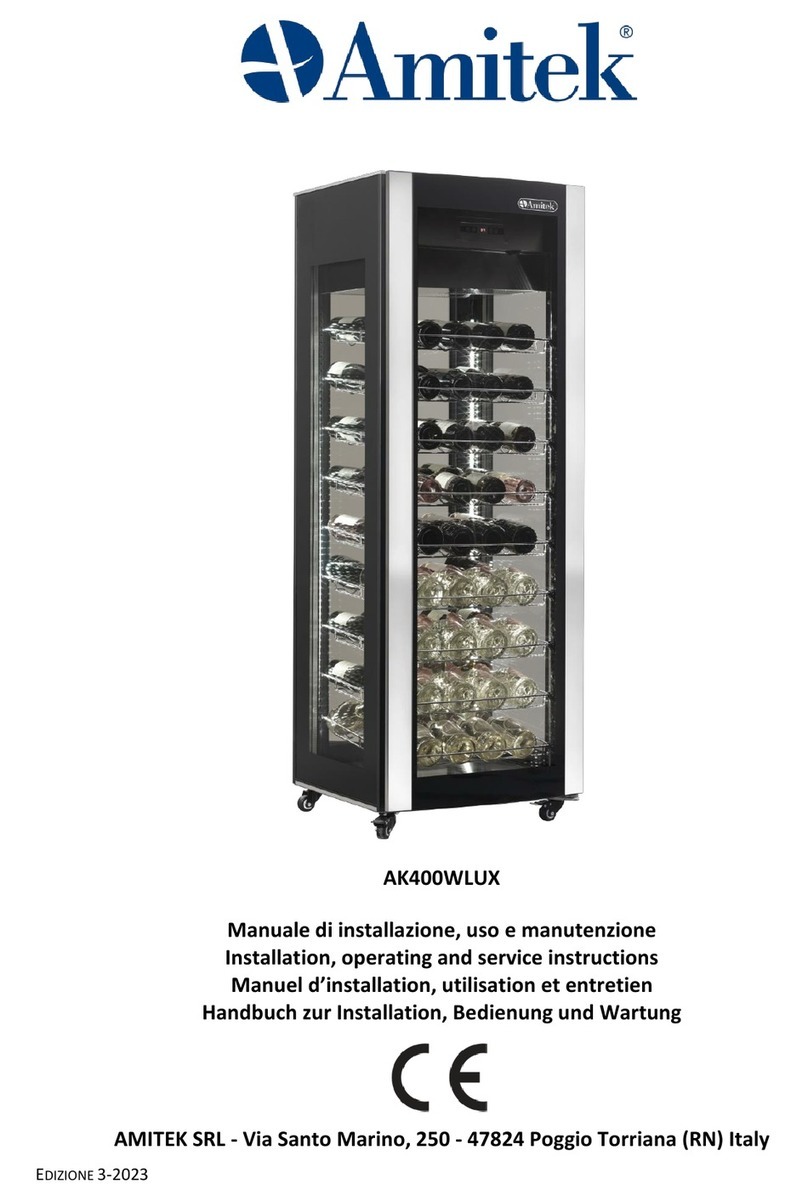
Amitek
Amitek AK400WLUX Installation, operating and service instructions
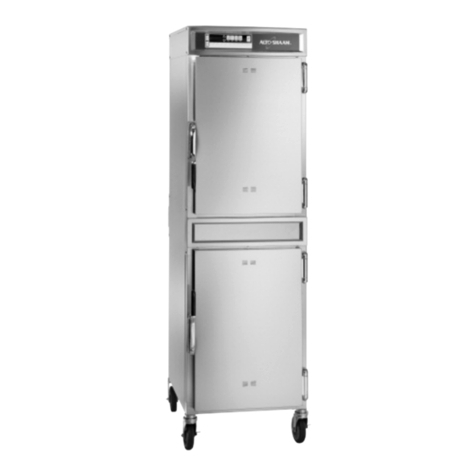
Alto-Shaam
Alto-Shaam 500-TH/III Installation, operation and maintanance manual
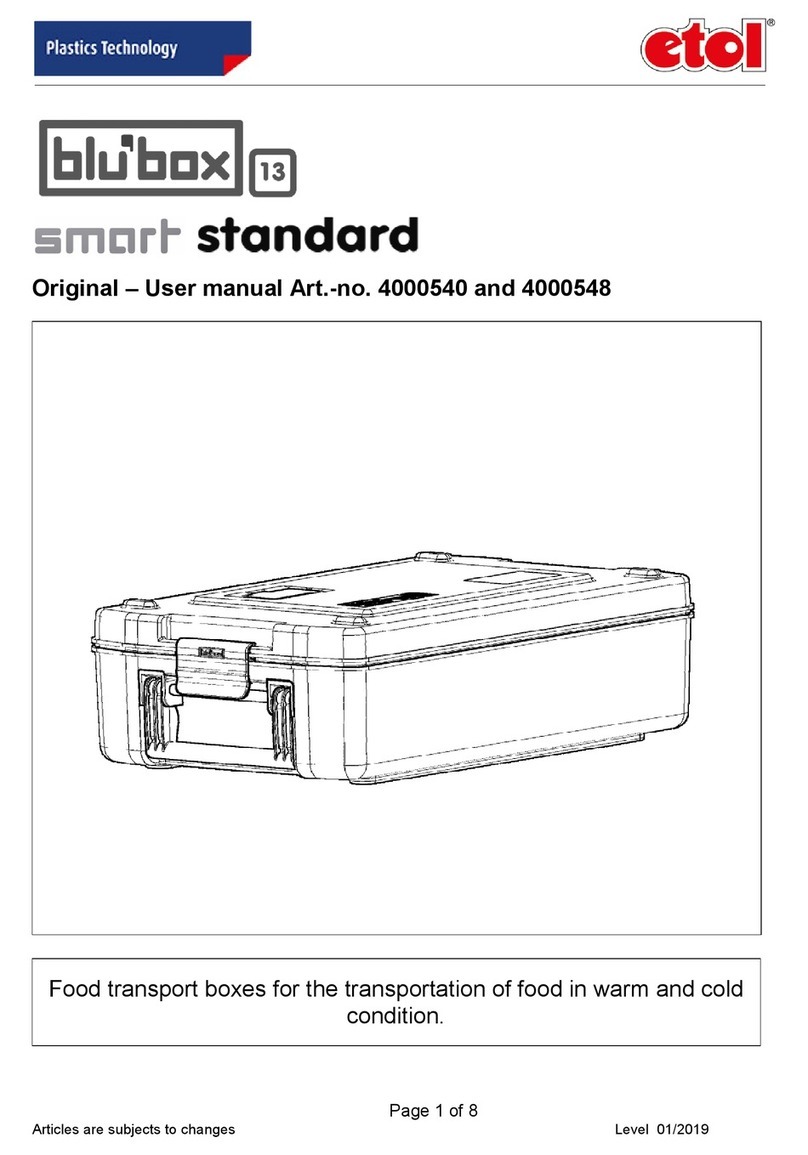
etol
etol blubox 13 user manual
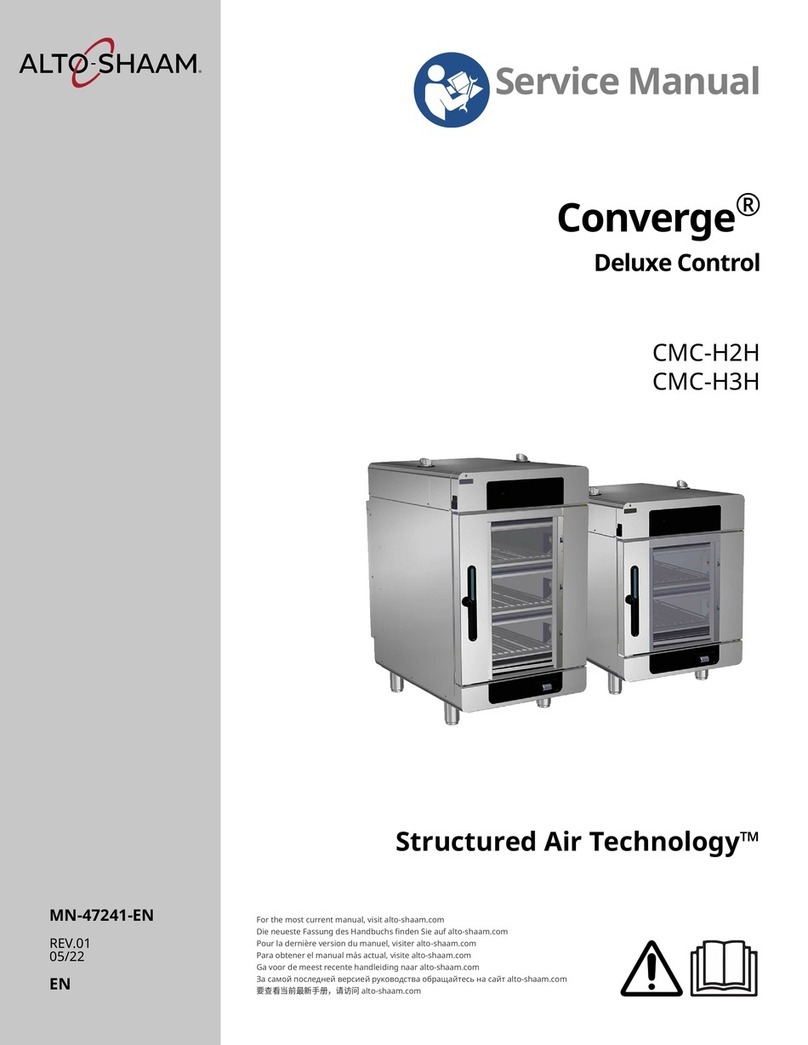
Alto-Shaam
Alto-Shaam Converge Deluxe Control Service manual
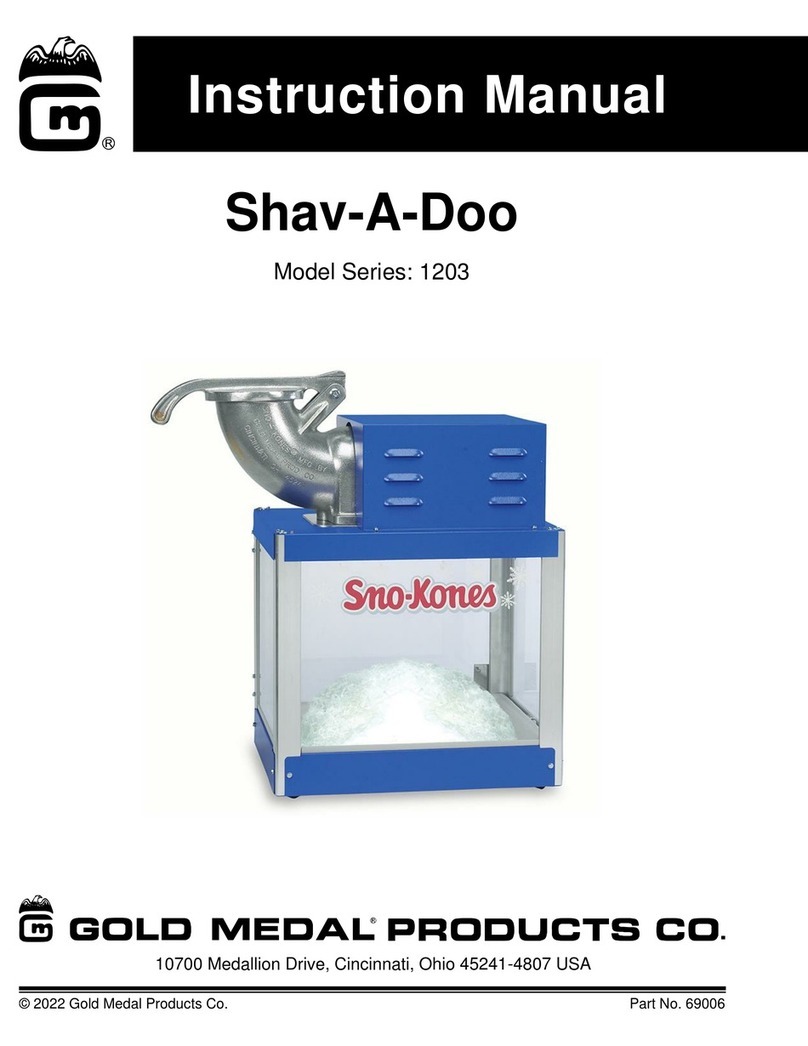
Goldmedal
Goldmedal Shav-A-Doo 1203 instruction manual
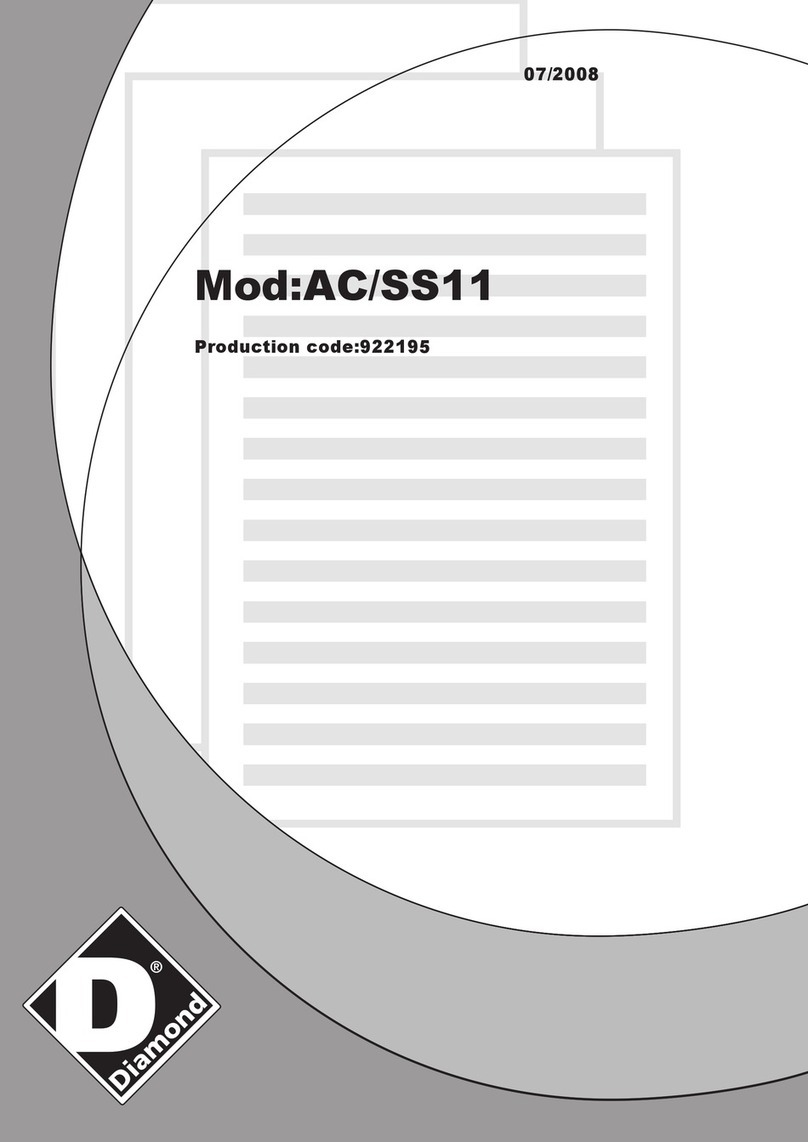
Diamond
Diamond AC/SS11 manual
